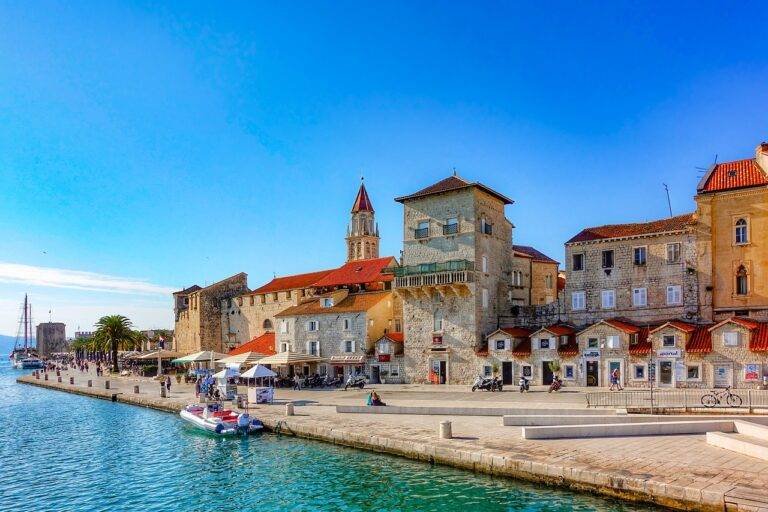Travel as a Form of Cultural Diplomacy
Travel has long been recognized as a powerful tool for fostering international relations and promoting cross-cultural understanding. As people from different countries come together through travel, they have the opportunity to learn about each other’s customs, traditions, and ways of life. This exchange of ideas and perspectives can help break down stereotypes and promote mutual respect and cooperation. In this article, we will explore the concept of travel as a form of cultural diplomacy and examine its impact on global relations.
The Role of Travel in Cultural Diplomacy
Cultural diplomacy is the practice of using cultural exchange and engagement to build relationships between nations and promote mutual understanding. Travel plays a central role in this process by allowing individuals to experience firsthand the culture and customs of a foreign country. By immersing themselves in a new environment, travelers can gain a deeper appreciation for the diversity of the world and develop empathy and respect for people from different backgrounds.
Benefits of Travel as Cultural Diplomacy
There are numerous benefits to using travel as a form of cultural diplomacy. One of the most significant advantages is that it promotes people-to-people connections that can help bridge cultural divides and build lasting relationships. When individuals travel to a foreign country, they have the opportunity to interact with locals, participate in cultural activities, and exchange ideas and perspectives. These interactions can help dispel misconceptions and stereotypes and foster a sense of empathy and understanding.
Impact of Travel on Global Relations
Travel can have a profound impact on global relations by promoting dialogue, cooperation, and mutual respect between nations. When people travel to new countries, they often return home with a greater appreciation for other cultures and a broader understanding of the world. This enhanced cultural awareness can lead to more open-minded and tolerant societies that are better equipped to address global challenges and work together to create a more peaceful and prosperous world.
Examples of Travel as Cultural Diplomacy
There are many examples of travel being used as a form of cultural diplomacy to promote international relations. One notable example is the exchange of students and scholars between universities around the world. By studying abroad, students have the opportunity to experience a new culture, learn a new language, and form relationships with people from different backgrounds. These experiences can help promote cross-cultural understanding and build bridges between nations.
Another example of travel as cultural diplomacy is the use of cultural exchange programs to showcase the best of a country’s arts, music, and cuisine. Through festivals, exhibitions, and performances, countries can share their cultural heritage with foreign audiences and promote mutual appreciation and respect. These cultural exchanges can help foster a sense of shared humanity and promote positive relations between nations.
Challenges and Considerations
While travel can be a powerful tool for cultural diplomacy, there are also challenges and considerations that must be taken into account. One of the main challenges is the potential for cultural misunderstandings and misinterpretations to arise when people from different backgrounds come together. To overcome these challenges, it is essential to promote intercultural dialogue and understanding and to encourage open-mindedness and empathy.
Another consideration is the impact of travel on local communities and the environment. As the number of tourists traveling to foreign countries continues to rise, there is a growing concern about the negative effects of mass tourism on cultural heritage sites, natural landscapes, and local economies. It is important for travelers to be mindful of their impact on the places they visit and to strive to be responsible and sustainable tourists.
Conclusion
In conclusion, travel is a powerful tool for promoting cultural diplomacy and fostering international relations. By encouraging people to experience new cultures, engage with diverse communities, and build lasting relationships, travel can help bridge cultural divides, promote mutual understanding, and create a more peaceful and prosperous world. As individuals, communities, and nations continue to connect through travel, they have the opportunity to learn from each other, grow together, and work towards a shared vision of a more inclusive and harmonious global society.
FAQs
Q: How can travel promote cultural diplomacy?
A: Travel can promote cultural diplomacy by facilitating people-to-people connections, promoting dialogue and understanding, and fostering mutual respect and cooperation between nations.
Q: What are the benefits of using travel as a form of cultural diplomacy?
A: The benefits of using travel as cultural diplomacy include promoting cross-cultural understanding, breaking down stereotypes, building lasting relationships, and fostering a more peaceful and prosperous world.
Q: What are some examples of travel being used as cultural diplomacy?
A: Examples of travel being used as cultural diplomacy include student exchange programs, cultural festivals, exhibitions, and performances, and cultural exchange programs that showcase a country’s arts, music, and cuisine.
Q: What are some challenges and considerations associated with using travel as a form of cultural diplomacy?
A: Some challenges and considerations include the potential for cultural misunderstandings, the impact of mass tourism on local communities and the environment, and the need to promote responsible and sustainable tourism practices.





